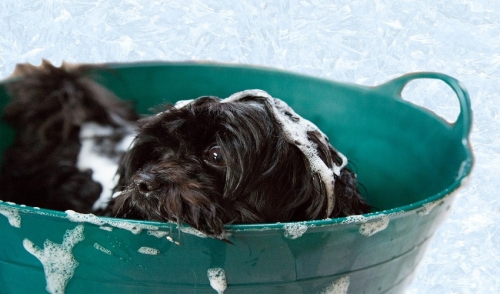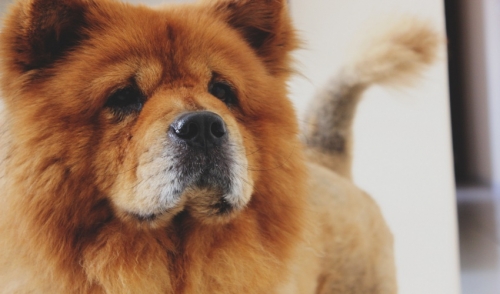Whether you groom your dog or cat yourself or take them to a professional groomer, behavior problems can cause unpleasant conflicts and create difficult situations for you and your pet. Fortunately, there are several ways you can work to correct your pet's poor behavior and still keep them beautifully groomed.
The Importance of Grooming
If your pet doesn't like to be groomed, why should you bother? Grooming does more than just keep your pet pretty, and it can be an important part of a healthy lifestyle.
- Grooming removes loose fur, especially when your pet may be shedding a heavy winter coat. This keeps your pet more comfortable and minimizes shed hair.
- Grooming removes matting from long-coated breeds, which will help their fur stay more even against their skin and prevent sores or bare spots.
- Grooming helps remove fleas, flea eggs, ticks and other pests from your pet's coat. This keeps your pet more comfortable and reduces risks from illnesses those pests carry.
- Grooming can minimize any discomfort or deformities your pet may have in their claws if the claws are kept properly trimmed and evenly balanced.
- Grooming specific problem areas, such as around the rear, eyes and paws, can help keep your pet cleaner and prevent infections.
With so many benefits from proper grooming, it is important to minimize your pet's behavior problems so the process is less stressful for both groomer and pet.
Behavior Problems Groomers Face
Groomers encounter all types of pet personalities, and while some pets are very easy to groom, there are a variety of problems that can occur. The most common types of grooming problems include…
- Aggression: Some pets may lash out at a groomer, and scratching or biting is a real possibility. Other pets may be unsociable when near unfamiliar animals at a groomer's, and fights could occur.
- Noise: Pets may show fear, stress or anger at a groomer by making noise. Barking, yowling, howling, whining or other noises could get extreme and may disrupt grooming or disturb other clients or animals.
- Movement: Many pets try to get away from groomers. They may wriggle or run, struggling against the groomer's actions. Extreme trembling or going limp can also make grooming much more difficult.
All types of grooming behavior problems make the process more difficult, which in turn makes it even more stressful for the pet. In extreme cases, groomers may refuse to service a particular pet, or they may charge extra fees for difficult grooming sessions.
Fixing Grooming Behavior Problems
Fortunately, there are several steps pet owners can take to help their pet adjust to grooming more easily.
- Make sure your pet's needs are met before grooming.
If an animal is hungry, tired or uncomfortable, they may behave poorly in a stressful situation like grooming. Be sure they are as comfortable as possible before any grooming, and avoid any grooming if your pet may be sick or injured. Be sure they have had a drink or light meal (unless the groomer requests otherwise), and take a bathroom break just before grooming begins.
- Meet with the groomer to learn their techniques.
Different groomers use different tools and techniques. Visit with your groomer and discuss what their methods may be, including how they react to behavior problems. Be candid about your pet's personality and potential issues that may arise, and choose a groomer who will keep your pet's best interests, safety and comfort in mind.
- Socialize your pet to unusual situations and noises.
Many pets react badly at the groomer's because they are not used to the setting, strange people or the loud noises of hoses, clippers and fans. If you socialize your pet more frequently, however, they will be accustomed to diversity and may not be as bothered or react as poorly. Visit pet parks or play areas, take your pet to more crowded locations and otherwise get them used to unusual situations so they can adjust better.
- Train your pet and familiarize your groomer with appropriate commands.
Training helps your pet stay focused and gives them a sense of comfort and stability. Use commands like stop, wait or stay and teach your groomer the tone of voice, hand signals or other cues you use when training your pet. If they are able to use the same commands, your pet is more likely to respond well. Have small treats on hand to reward your pet for good behavior.
- Observe a grooming session to spot any bad behavior triggers.
You know your pet best, and if you can watch a grooming session, you may notice things that are upsetting your pet and causing bad behavior. Reputable groomers should always have a way you can observe a session, and you can take notes about problems that occur and talk to a trainer or your veterinarian for possible solutions.
- Learn to do more grooming at home.
You may be able to do many grooming tasks – trimming long fur, clipping nails, rinsing eyes, etc. – at home and spare your pet unnecessary trips to the groomer. As you groom your pet, you will also be familiarizing them with grooming in a more comfortable environment, which can help lessen their poor behavior.
Grooming behavior problems are not uncommon, and you can easily take steps to make grooming as stress-free for your pet as possible.


Comments